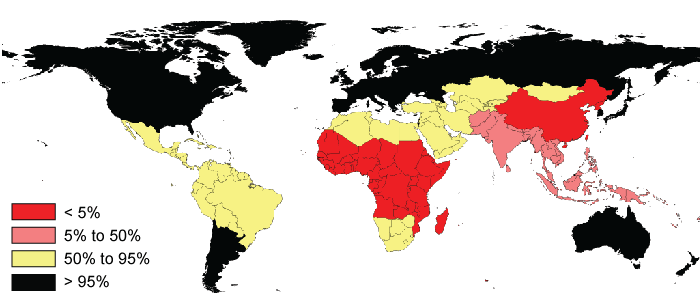Verbal autopsy
What is verbal autopsy?
Earlier in this session we learnt how important cause of death data from civil registration is for public health planning, resource allocation, monitoring and evaluation. However, more than 30% of the world’s population live in regions where less than 5% of all deaths are registered as shown in Figure 1 (Byass et al., 2013, PLoS Medicine).
Figure 2. Proportions of deaths covered by civil registration, shown by GBD-2010 regions.

Souce: Byass P, de Courten M, Graham WJ, Laflamme L et al. (2013). Reflections on the Global Burden of disease 2010 Estimates. PLoS Med 10(7): e1001477. doi:10.1371/jounal.pmed.1001477. http://www.plosmedicine.org/article/info:doi/10.1371/journal.pmed.1001477 ![]()
Verbal autopsy is widely used as a method for determining causes of death in places where deaths occur mainly in the community with no medical supervision. Verbal autopsies are interviews where information on the medical signs and symptoms preceding a death is gathered from the deceased’s caregivers or close family members using a structured questionnaire.
In this section we will provide a step-by-step overview of the verbal autopsy process – from the questionnaire to providing estimates of the cause-specific mortality fractions in populations.